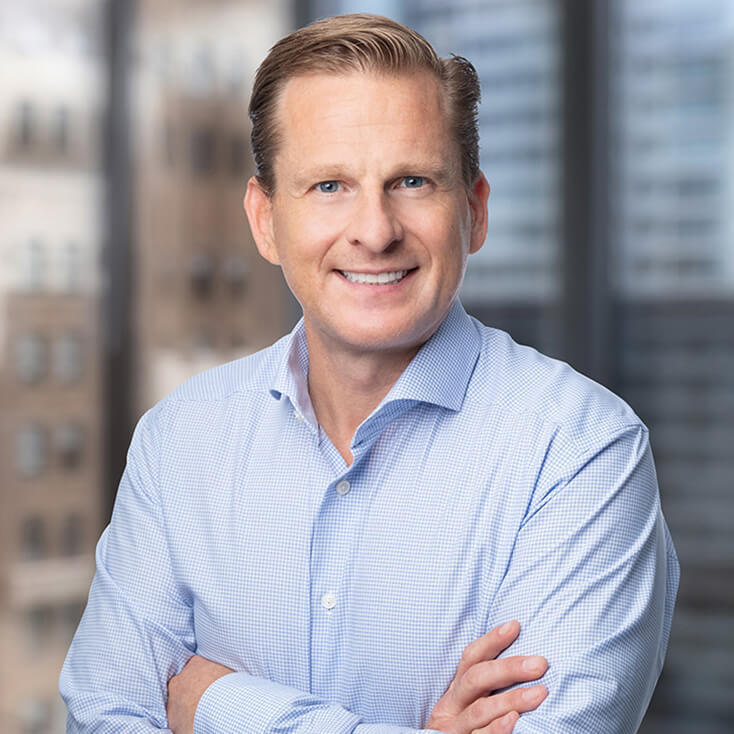February 16, 2019 | Quiet Counsel | 8 min read
The Case for Being Bold
While meeting with some Ontario-based clients in January, l got caught in the “polar vortex,” which resulted in a cancelled flight, a treacherous drive to Toronto, and a long wait at the airport – and left me with plenty of time to reflect on weather patterns, and capital markets.
Many are surprised to learn that polar vortexes are not actually that uncommon. They exist at all times around the poles, and their migration south occurs fairly regularly during wintertime, including six times in the last 40 years. With this perspective, the extraordinary is rendered somewhat more ordinary.
Capital markets are not dissimilar. The fourth quarter of 2018 was undoubtedly painful for most portfolios, with many equity markets declining in excess of 10% (and some falling more than 20% from their peaks). However, just like polar vortexes, these corrections are not a new phenomenon. ln fact, the correction in the fourth quarter of 2018 was relatively mild compared to the ones that occurred as a result of the 2014-15 decline in oil prices, the 2011 European debt crisis, and in particular relative to the 2007-08 Clobal Financial Crisis.
Viewing the Recent Market Correction with an Unbiased Eye
Our psychological response to crises tends to follow predictable patterns, be it the crisis in weather patterns or in capital markets. Specifically, we have a natural tendency to place undue importance on recent events (“recency bias”) and to seek out facts that corroborate our viewpoint (“confirmation bias”). For example, US President Trump used the “recent” weather patterns to “confirm” his view on climate change and global warming – a rather unscientific conclusion to reach from a singular observation.
lnvestors must battle similar recency biases when interpreting market moves. The fourth quarter correction provided one such test, as not every crisis will resemble 2008 in magnitude or catalysts or both, however traumatic the recent experience feels. Similarly, despite 35+ years of mostly positive bond market returns, these securities can in fact be quite volatile (particularly when bond yields are rising), and (contrary to popular belief) bonds do not always move in the opposite direction to equities. For the thirty years prior to about 1999, they largely moved in synch. These points have very important implications for the volatility investors should expect in balanced portfolios.
Was the fourth quarter correction a harbinger of a coming recession? Some facts can shed light on this other common misperception (aka bias): Of the 12 times the S&P 500 fell by more than 20% since WWll, in five of the cases no recession occurred, and in the other seven cases the correction actually lagged the start of the recession by one to seven months. This would imply that the US would have entered a recession in May – November 2018, something no one is arguing.
lt’s natural to get caught up in the hype, but as investors and stewards of our clients’ capital, we remain vigilant against these biases. Our investment discipline values facts, and we try not to let recent history determine our views. And so, we reflect on the past with humility and look to the future with a critical eye.
Headlines Aside, Tide of Global Growth Still Rising
The outlook for global growth has decelerated but remains positive and relatively close to trend growth – a remarkable feat considering the myriad risks and uncertainties that have arisen in recent months. These risks include: significant trade and intellectual property tensions between the world’s two largest economies, a prolonged US government shutdown reflecting an apparently dysfunctional US administration and threatening a looming US debt ceiling crisis, rising geopolitical tensions including nuclear armament in the former Cold War adversaries, an escalation of risks surrounding the collapse of the European Union through a UK hard exit or an ltalian debt crisis, and the ongoing populist tensions seen most violently in the Yellow Vest protests in France, to name a few.
But against this chaotic backdrop, based on recent job gains and wage increases, the US consumer has been remarkably resilient. This is critical to our economic outlook for the US and Canada. The US consumer makes up almost 70% of the US economy, and it is hard to be too pessimistic when consumer confidence remains relatively high, consumers are in much better financial positions than prior to 2007, are basically all employed, and are benefiting from real wage gains. The US consumer is akin to a tide, and the economic indicators that we watch still suggest that this tide is rising.
Spending Like lt’s 1999
We are not, however, complacent about the consumer. December retail sales were quite weak and many retailers observed challenging sales outlooks in the 4th quarter. Further, the US Conference Board’s January 2019 consumer confidence survey showed one of the widest gaps ever between consumers’ assessment of their current situation, and future expectations. ln other words, Americans seem to know that the future will almost certainly be bleaker than the present, but they’re spending anyway. This disconnect can’t persist forever, and when it dissipates, consumer spending – and economic growth – must fall.
January Bounce
But if US consumers are that pessimistic about the future (at least relative to their current situation), why are equity and credit markets doing so well in 2019?
One key reason is the pivot from the Federal Reserve toward a pause in further rate hikes. Central banks, tasked with maintaining the economy in a Coldilocks zone between recession and inflation, is usually the culprit in cutting expansions short by raising rates too much, too quickly. This pivot to a more accommodating central banking stance, mirrored by several other major central banks, is extremely important to our outlook for markets in 2019 and beyond, as it reduces the near-term risk of recession.
Translating Low Rates
As investors with a long-term investment horizon, forecasting CDP growth for the next quarter or even year matters much less to us than identifying which companies will do well through this and future cycles. To borrow a phrase, when we’re on a winding road, we’re more interested in making sure our headlights are on. We focus on the next three to four years.
With that said, we can draw some conclusions (and comfort) from the latest pivot. As central banks raised rates over the last three years alongside the global economic expansion, interest rates for both short-term and long-term bonds have been rising. While rising rates correspond to falling fixed income prices, this also created the opportunity for investors to reinvest their maturing issues into bonds at higher yields – a welcome reprieve after a decade of anemic offerings.
The rate pause and market sentiment have put a cap on that. lndeed, if you look across many developed and emerging markets, “real rates” (the quoted yield minus expected inflation) hover again between 0% and 1%1. For foundations, endowments, and many pension plans, achieving a return above inflation determines your institution’s sustainability, and for private clients, the viability of your financial goals.
But these low rates also create opportunity at a few levels. Low borrowing rates (<1%) mean that governments can borrow sustainably with real growth of 2-3%. As a government, tax rates are growing faster than interest payments, and for companies, revenues are growing faster than debt service so they can invest in their businesses and generate organic growth.
Return Requires Risk
For investors, the low base rates mean that you will need to endure some volatility in your portfolio in order to hit your return objectives. lf you are a long-term investor and focus on high quality companies, however, there is sufficient real growth in the economy for you to meet your long-term needs. You’ll just need to prepare for a bumpier ride.
The type of investments that we believe represent value to meet your objectives are high quality equities, non- investment grade bonds, and businesses that tend to be more cyclical.
Although it has slowed recently, we believe we remain in an environment of relatively stable real growth, albeit with increasing volatility. Over the next 5 years, stocks are one of the only asset classes likely to deliver decent absolute returns – we estimate on the order of 8-10% on average – and for the expected risk, offer compelling value. We believe that in such an environment, investors should be willing to selectively increase the economic sensitivity and “lean” a little more into cyclical businesses – even though it’s uncomfortable – precisely because it’s uncomfortable and the rest of the investor base is moving more into the perceived safety of fixed income surrogates.
Similarly, fixed income investors can lean into more cyclical debt issuers by investing in bonds or senior loans of companies that carry slightly higher risk but offer more attractive yields. For example, high yield debt is currently offering an additional 3%+ in yield versus risk-free Treasury bonds (and typically less than 1% extra for investment-grade bonds).
As with the polar vortex, every market storm will eventually pass. Perhaps we’re past the current one. Perhaps not. But we do know that Spring will come again, and behind that an infinite parade of seasons. Construct a robust investment portfolio designed to deliver superior risk-adjusted returns over the long- term, and you’ll view the next polar vortex as we have: a buying opportunity.
1Believe it or not, 0%-1% are levels which, while low by historical standards, are actually an improvement from the negative real rates seen as recently as this past December. Co back nearly 30 years to when l was a young bond trader in the early 1990s, and the benchmark 30-year US Treasury (maturing in 2021) offered real yield of 4.25%. lt’s now under 1%.
lMPORTANT NOTE: This article is not intended to provide advice, recommendations or offers to buy or sell any product or service. The information provided is compiled from our own research that we believe to be reasonable and accurate at the time of writing, but is subject to change without notice. Forward looking statements are based on our assumptions, results could differ materially.
Reg. T.M., M.K. Leith Wheeler Investment Counsel Ltd.
M.D., M.K. Leith Wheeler Investment Counsel Ltd.
Registered, U.S. Patent and Trademark Office.






